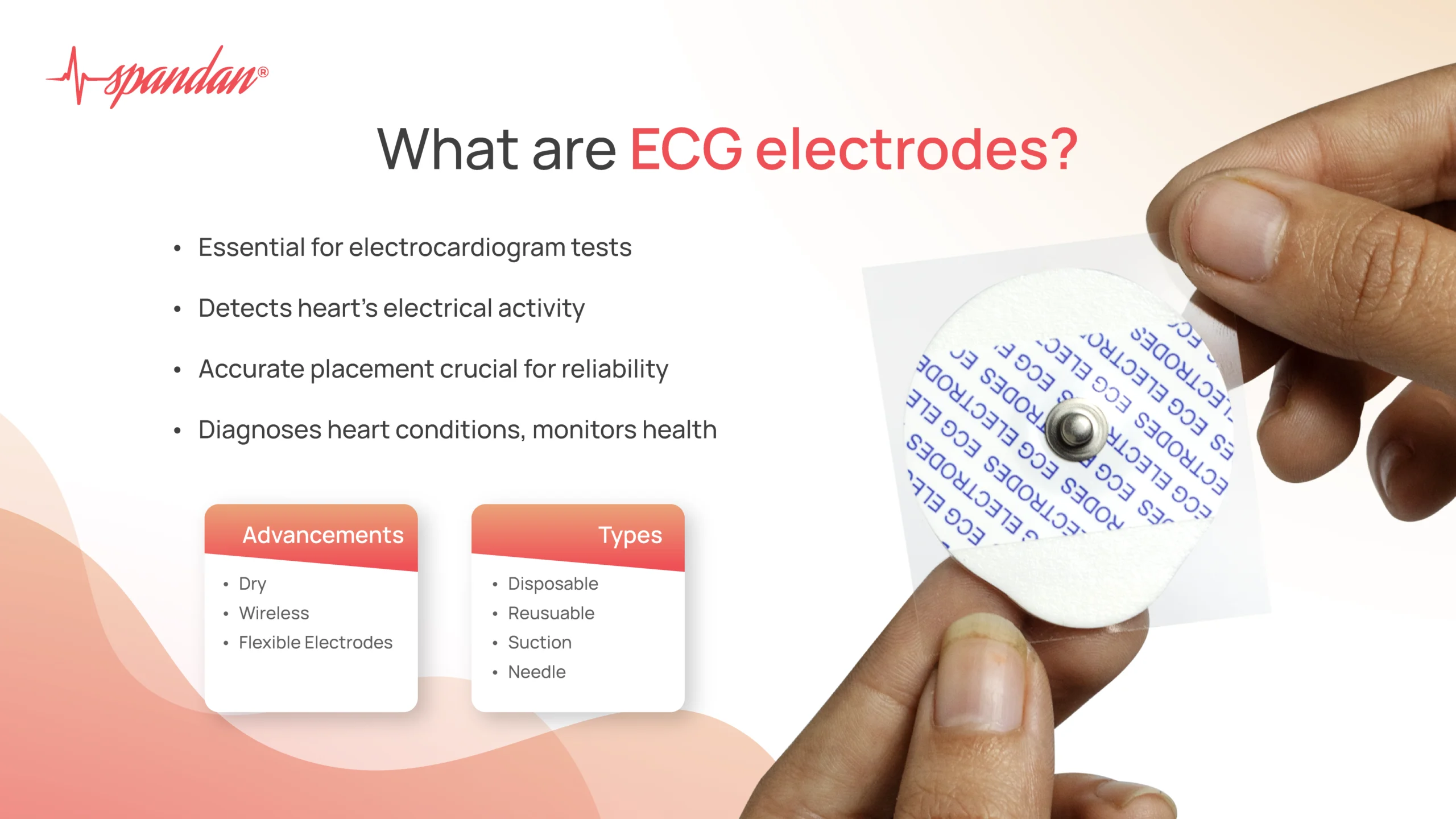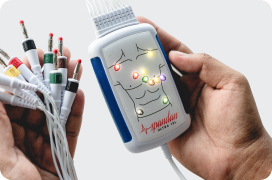
Author:- Mr. Ritesh Sharma
An electrocardiogram test cannot be performed without ECG electrodes. ECG electrodes serve as the core of the diagnostic process as they stick to various parts of the patient’s body to capture the electrical activity of the heart from every angle possible. The ECG electrodes competently detect various heart abnormalities through an abnormal ECG, capturing elevated or depressed electrical impulses of the heart.
The ECG electrodes capture electrical impulses of the heart from every possible angle and showcase them into waveform patterns- P-wave, QRS complex, and T-wave. Therefore, if there is any heart abnormality, they are represented as P-wave ECG abnormalities, QRS complex abnormalities, and T-wave abnormalities.
In this blog, delve deeper into the realm of ECG electrodes to understand their significance and functionality. So, all healthcare professionals and general people curious about electrocardiograms will find worthy education in this blog.
The Essence of ECG Electrodes
ECG electrodes serve as conduits between the body and the electrocardiograph machine. They detect and transmit the tiny electrical signals generated by the heart during each heartbeat. By analyzing these signals, medical professionals can assess the heart’s rhythm, detect abnormalities, and diagnose cardiac conditions such as heart palpitations, cardiac arrhythmias, myocardial infarctions, and electrolyte imbalances.
Types of ECG Electrodes
There are several types of ECG electrodes, each designed for specific applications and patient needs. The most common types include:
- Disposable Adhesive Electrodes: These are adhesive patches with conductive gel that adhere to the patient’s skin. They are convenient for routine ECG monitoring in hospitals, clinics, and ambulatory settings. Disposable electrodes reduce the risk of cross-contamination and are easy to apply and remove.
- Reusable Electrodes: Made of metal or conductive plastic, reusable electrodes are suitable for long-term monitoring and diagnostic procedures. They are durable, cost-effective, and environmentally friendly. However, they require cleaning and proper maintenance between uses to ensure accurate readings and prevent infections.
- Suction Electrodes: These electrodes use suction cups to attach to the patient’s skin. They provide a strong and stable connection, making them ideal for exercise stress tests and situations where the patient’s movements may displace conventional electrodes.
- Needle Electrodes: Primarily used in clinical settings for diagnostic purposes, needle electrodes penetrate the skin to directly measure electrical activity from specific muscle fibers or nerve tissues. They offer high precision but are invasive and require skilled placement by trained professionals.
Placement of ECG Electrodes
The accurate placement of ECG electrodes is crucial for obtaining reliable readings. Electrode placement follows standardized protocols to ensure consistency and comparability across different healthcare settings. The most common electrode placement sites include:
- Limbs: Electrodes are placed on the arms and legs, typically on the wrists and ankles. These limb leads, designated as I, II, III, AVR, AVL, and AVF, record the electrical activity between different combinations of limbs.
- Chest: Chest electrodes, also known as precordial leads, are placed on specific locations across the chest wall. These leads, labeled V1 to V6, capture the electrical impulses traveling through different regions of the heart, providing a comprehensive view of its activity.
Advancements in ECG Electrode Technology
Over the years, advancements in technology have led to the development of innovative ECG electrode designs aimed at improving comfort, accuracy, and usability. Some notable advancements include:
- Dry Electrodes: Unlike traditional gel-based electrodes, dry electrodes eliminate the need for conductive gel, making them more convenient and mess-free. They utilize alternative materials or surface treatments to establish a reliable connection with the skin while minimizing skin irritation and discomfort.
- Wireless Electrodes: Wireless ECG electrodes transmit electrical signals to the electrocardiograph machine via Bluetooth or other wireless technologies. They offer greater mobility and flexibility, allowing patients to move freely during monitoring without being tethered to the machine. Wireless electrodes are particularly beneficial for ambulatory monitoring and remote patient care.
- Flexible Electrode Arrays: Flexible electrode arrays conform to the contours of the body, ensuring optimal skin contact and signal acquisition. They are especially useful for patients with irregular chest shapes or mobility restrictions, as they provide a comfortable and secure fit without compromising data quality.
In the realm of cardiac care, ECG electrodes serve as the bridge between the human body and medical technology. Their role in capturing and transmitting the electrical signals of the heart cannot be overstated. From diagnosing life-threatening conditions to monitoring cardiac health, ECG electrodes play a pivotal role in safeguarding the well-being of patients worldwide.
As technology continues to evolve, we can expect further innovations in ECG electrode design, enhancing their functionality, comfort, and efficiency. However, amidst these advancements, the fundamental purpose of ECG electrodes remains unchanged: to provide accurate and reliable insights into the heart’s electrical activity, empowering healthcare professionals to deliver timely and effective interventions.




